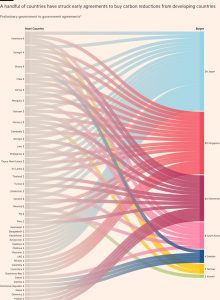Elon Musk’s feat of engineering
Unlock the Editor’s Digest for free
Roula Khalaf, Editor of the FT, selects her favourite stories in this weekly newsletter.
Just launching Starship, the largest and most powerful rocket ever to fly, seems like a major achievement. To return its booster, as high as a 20-floor building, delicately to the launch tower and catch it using giant metal arms almost defies belief. Yet this is what Elon Musk’s SpaceX achieved this week, on only Starship’s fifth uncrewed test flight. Proving a reusable megarocket is workable opens a new era in space transport, and in the commercialisation of space. Musk is a capricious and contentious figure. Yet the description of the SpaceX founder by Britain’s astronomer royal — as a “21st-century Isambard Kingdom Brunel”, the visionary engineer of the Industrial Revolution — may not be entirely wide of the mark.
Starship’s significance, if it develops as planned, is two-fold. It will carry the largest ever payload into space, by a wide margin. SpaceX has said that, using orbital refuelling, which it plans to introduce, Starship could deliver 100 tonnes to the Moon or Mars (Nasa’s SLS rocket will eventually carry up to 46 tonnes). A single Starship launch can carry what previously required dozens. And the fact that both the rocket’s Super Heavy booster and the Starship spacecraft that sits atop it are designed to be reusable also slashes the cost, and increases the frequency, of launches.
The heavy rocket is central to Nasa’s plans to return astronauts to the Moon, and to Musk’s own vision of colonising Mars. In a typically stretched target, Musk announced on his X site last month that he planned about five uncrewed Starship missions to Mars in two years and, potentially, crewed missions in four. Astronomers say Starship could make next-generation space telescopes and observatories cheaper — since they will no longer have to be designed to squeeze into tiny spaces — and get them into orbit far sooner than expected. Some space executives suggest the rocket could become a kind of “railroad” into orbit, and beyond.
Some are more sceptical. Once Musk has used Starship to launch another 5,000 satellites for its Starlink internet network to add to its current 7,000, they question whether there will be enough demand from the global satellite industry to fill frequent launches. The federal government, via Nasa, might then remain its main customer — leaving US taxpayers in effect subsidising Musk’s interplanetary ambitions.
Part of Musk’s talent, though, is to turn “big ideas” of the future into commercial realities, notably with Tesla in electric vehicles. He is no less famed for his unforgiving management style. But his readiness and ability to drill down into scientific detail — sometimes sleeping alongside engineers on the factory floor — help to instil in his teams some of his own relentless urgency.
Belief in his talent combined with a fear of missing out have inspired similar loyalty from many investors — despite mounting risks around Musk. These include his feuding with regulators such as the Federal Aviation Authority and the Federal Communications Commission, which warned last month that Starlink may become a monopoly. His mishandled acquisition of Twitter and “absolutist” championing of free speech have caused frictions with authoritarian and democratic governments alike. Even some tech industry counterparts who back Donald Trump to return as US president raised eyebrows at Musk’s antics at a recent Trump rally.
For the entrepreneur to take a mooted role in a second Trump administration would be a misguided distraction. Just days after a demonstration of self-driving taxis flopped, the latest Starship flight was a reminder of what Musk, and the teams he enables, can achieve — when the restless billionaire channels his energies into what he does best.
#Elon #Musks #feat #engineering




